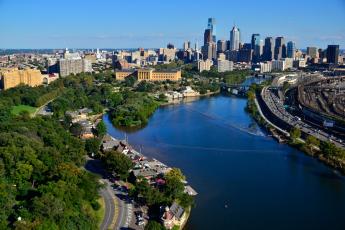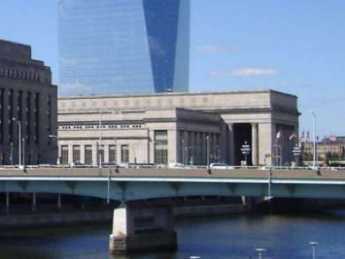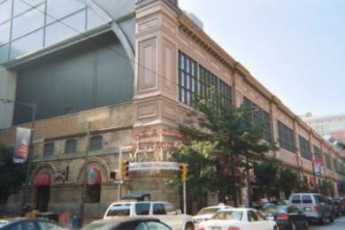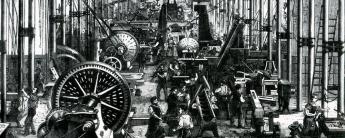Related Topics
West of Broad
A collection of articles about the area west of Broad Street, Philadelphia, Pennsylvania.
Particular Sights to See:Center City
Taxi drivers tell tourists that Center City is a "shining city on a hill". During the Industrial Era, the city almost urbanized out to the county line, and then retreated. Right now, the urban center is surrounded by a semi-deserted ring of former factories.
City of Rivers and Rivulets
Philadelphia has always been defined by the waters that surround it.
Market at Schuylkill

|
| Kelly Drive River Side |
Two columns of commercial high-rise office buildings are now advancing West on Market Street, although construction has halted for the moment because of economic recession. The last four or five blocks before you reach the Schuylkill are in a state of decay characteristic of real estate waiting for a developer.

|
| river view 30th street |
Because the land rises to a summit around 22nd Street and then slopes off to the river, Market Street at this point becomes the approach to a bridge, and the buildings have their front doors considerably above the ground. One apartment building and a furniture design building (there's a very good restaurant inside) take advantage of the view over the river, which can be quite spectacular at night. Outdoor lighting at sundown suddenly emphasizes the impressive classical architecture of 30th Street Station, and the Art Museum on its acropolis.

|
| Pennsylvania Academy of Fine Arts |
But down at the bottom of the buildings, well below street level on the bridge approaches, is a pretty intimidating scene right out of some novel by Charles Dickens, with cobblestones, dark alleys, deserted parking lots, and dim street lights. This is the area of the former terminal of the Baltimore and Ohio Railroad . In its time, the Terminal building was an admired product of the imagination of Frank Furness(pronounce:"furnace"). It will be remembered that the Pennsylvania RR tracks run along the West bank, converting this lovely river into a depressing sight for several miles. The B&O was the first railroad in America, and for a while, the two railroads were booming competitors. Both railroads have of course gone through bankruptcies and mergers, their names are gone. It's even hard to say for sure who owns what is left of them.

|
| Reading railroad |
Just about every railroad in America (the European ones are government subsidized) has been through bankruptcy, so the whole railway industry had a century of the boom but now has an uncertain future. The B & O at first only headed westward to Ohio, but then turned North to try for New York-Washington dominance by coming up the Schuylkill on its East side, going through a tunnel under the Acropolis that now holds the Art Museum, and then turned East along Race Street to join the Reading Railroad at 12th Street. The Reading had a North-South spur called the Trenton Cut-Off which was to be the trunk line for the combined East Coast railroad. Eventually, the Pennsylvania Railroad won this battle by avoiding acquisitions and using leased rights of way. Although it eventually became the dominant railroad of the country, Pennsylvania only owned the property between Philadelphia and Pittsburgh, leasing all the rest from about 70 partner lines; it proved a better business model than purchasing the trackage.

|
| Industrial Revolution |
This transportation frenzy had to reflect a major underlying economic upheaval. Two events propelled Philadelphia into the Lehigh and Delaware Rivers, and then the railroads brought it down along the Schuylkill, because the Lehigh River alternative was steep and rocky, filled with dangerous rapids.
The second economic event was the discovery of oil in upstate Pennsylvania. Almost all freight traffic on the great national railroads was going from East to West, so the trains returned East without much cargo. But the discovery of oil was soon followed by the construction of refineries in Philadelphia, creating the return traffic needed to put the Pennsylvania Railroad ahead of its competitors, especially the New York Central. Heavy rail traffic and smoking refineries create a wasteland around them, and that was the price Philadelphia paid for its boom.
For a tour of the area mentioned in this Reflection, visit Seven Tours Through Historic Philadelphia
Originally published: Thursday, May 13, 1993; most-recently modified: Thursday, May 23, 2019